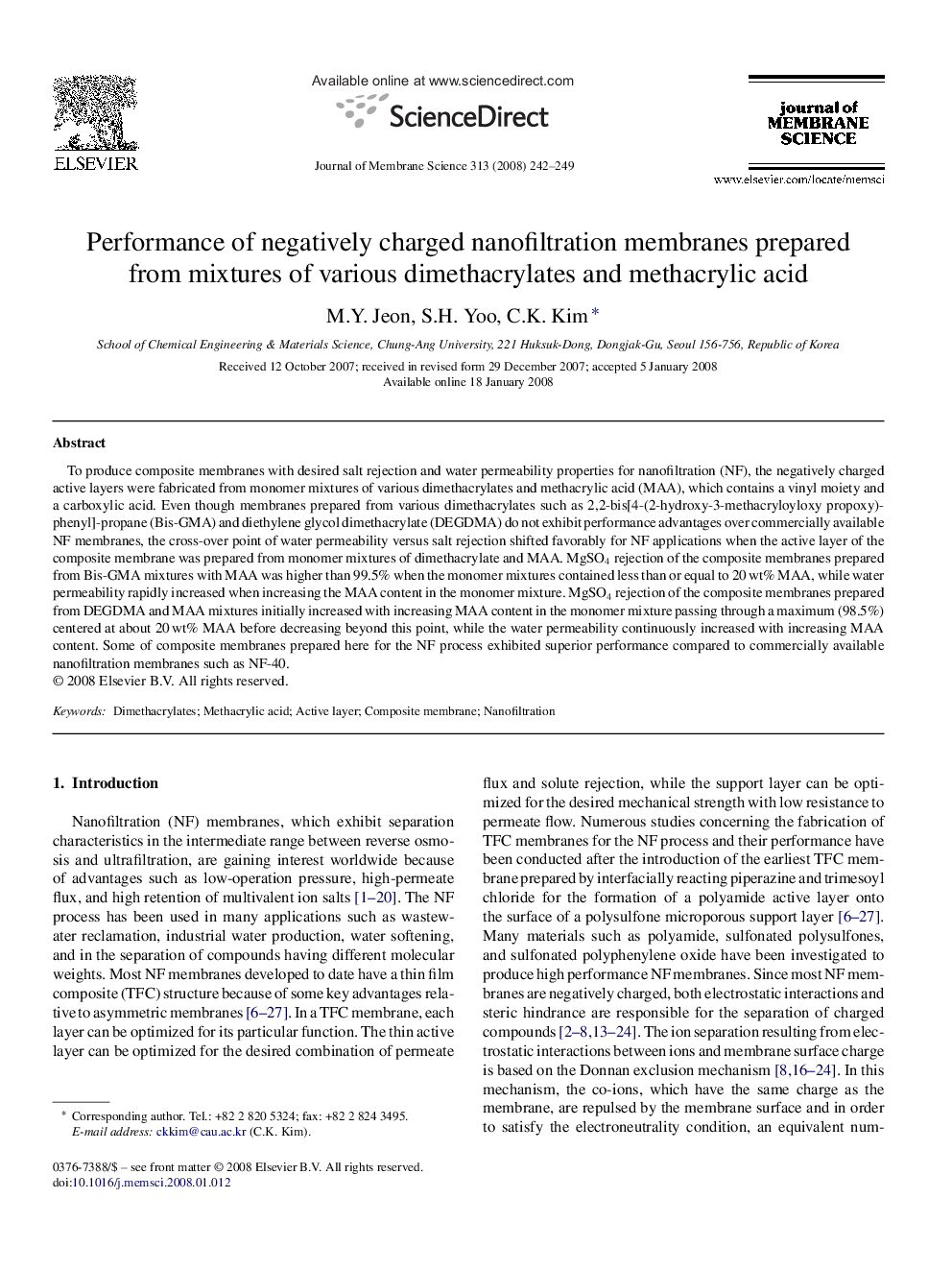| Article ID | Journal | Published Year | Pages | File Type |
|---|---|---|---|---|
| 638027 | Journal of Membrane Science | 2008 | 8 Pages |
To produce composite membranes with desired salt rejection and water permeability properties for nanofiltration (NF), the negatively charged active layers were fabricated from monomer mixtures of various dimethacrylates and methacrylic acid (MAA), which contains a vinyl moiety and a carboxylic acid. Even though membranes prepared from various dimethacrylates such as 2,2-bis[4-(2-hydroxy-3-methacryloyloxy propoxy)-phenyl]-propane (Bis-GMA) and diethylene glycol dimethacrylate (DEGDMA) do not exhibit performance advantages over commercially available NF membranes, the cross-over point of water permeability versus salt rejection shifted favorably for NF applications when the active layer of the composite membrane was prepared from monomer mixtures of dimethacrylate and MAA. MgSO4 rejection of the composite membranes prepared from Bis-GMA mixtures with MAA was higher than 99.5% when the monomer mixtures contained less than or equal to 20 wt% MAA, while water permeability rapidly increased when increasing the MAA content in the monomer mixture. MgSO4 rejection of the composite membranes prepared from DEGDMA and MAA mixtures initially increased with increasing MAA content in the monomer mixture passing through a maximum (98.5%) centered at about 20 wt% MAA before decreasing beyond this point, while the water permeability continuously increased with increasing MAA content. Some of composite membranes prepared here for the NF process exhibited superior performance compared to commercially available nanofiltration membranes such as NF-40.
